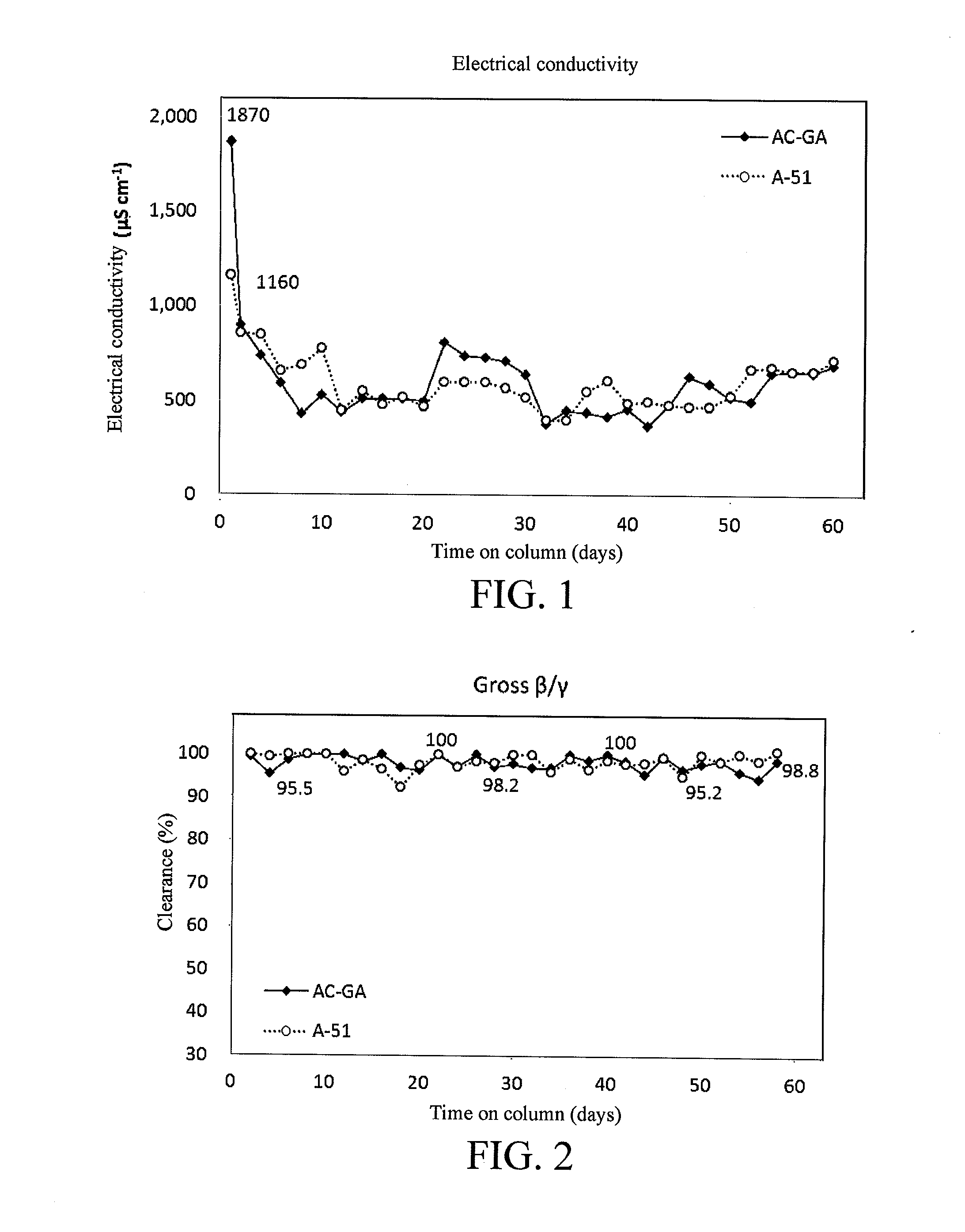Method for granulation of absorbent and adsorbent granules prepared by the same
a technology of absorbent and adsorbent, which is applied in the direction of radioactive contaminants, silicates, other chemical processes, etc., can solve the problems of emulsification of effluent, poor heat resistance of resin, and serious damage to the environmen
- Summary
- Abstract
- Description
- Claims
- Application Information
AI Technical Summary
Benefits of technology
Problems solved by technology
Method used
Image
Examples
embodiment 1
Granulation of the Adsorbent
[0052]17.5 kg of sodium metasilicate powder was added into 35 liters of water for complete dissolution, to give a solution of sodium metasilicate in water. 20 kg of metakaolin was placed into a mechanical mixer, and 35 liters of the resulted sodium metasilicate aqueous solution was added with stirring at a rotational speed of 100 rpm for 15 minutes, to give the slurry (wherein Si / Al=1.7, Na / Si=0.93, Na2O / SiO2=0.47, H2O / Na2O=13.6). Then, to the slurry, 40 kg of zeolite A from Example of preparation 1 was added with uniform stirring for 15 minutes.
[0053]Then, the resulted slurry was poured onto the nylon cloth of 400 meshes, and dried at room temperature for about 24 hours until solidifying. Then, the molded final product was broken and sieved on the sieve with mesh size of 2 mm by vibration, to give the adsorbent granules with particle size of less than 2 mm.
[0054]Then, 1.0 g of Ca(OH)2 and 0.5 g of Na2CO3 were added into 1 liter of tap water, and had CO2 ...
embodiment 2
[0055]Granulation was carried out as in Embodiment 1, except for zeolite X in place of zeolite A in Embodiment 1, to give the granule adsorbent 2.
embodiment 3
[0056]Granulation was carried out as in Embodiment 1, except for zeolite X in place of zeolite P in Embodiment 1, to give the granule adsorbent 3.
PUM
| Property | Measurement | Unit |
|---|---|---|
| temperature | aaaaa | aaaaa |
| temperature | aaaaa | aaaaa |
| temperature | aaaaa | aaaaa |
Abstract
Description
Claims
Application Information
 Login to View More
Login to View More - R&D
- Intellectual Property
- Life Sciences
- Materials
- Tech Scout
- Unparalleled Data Quality
- Higher Quality Content
- 60% Fewer Hallucinations
Browse by: Latest US Patents, China's latest patents, Technical Efficacy Thesaurus, Application Domain, Technology Topic, Popular Technical Reports.
© 2025 PatSnap. All rights reserved.Legal|Privacy policy|Modern Slavery Act Transparency Statement|Sitemap|About US| Contact US: help@patsnap.com

